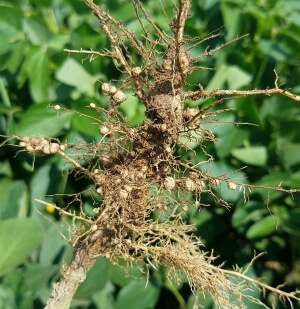Great Bend Co-op Agronomy Weekly - January 7 2019
Jan 06, 2019

Utilizing Cover Crops
Tillage systems have traditionally been used as a method to prepare for planting, controlling weeds, removal of plant residue, and loosen compacted surface soil. While tillage can be a critical component in a successful and profitable agriculture system, conservation tillage and cover crops have been a practice established to conserve the soil and benefit the soil health of your farm.With many different species of cover crops, they all play a different role. Legumes such as clover and the different types of vetch. These legumes help pull atmospheric nitrogen into the plant and convert it, so it can be used by the plant. When the legume is terminated it can leave 30% – 60% of the nitrogen in the soil for the following cash crop to use. This potential nitrogen can help cut fertilizer costs and offset the cost of the seed from the cover crop.
Some types of cover crops, such a brassicas, have deep tap roots that can help break up a hard pan. When in a no-till program, there can be compacted areas in the field from traffic or heavy rainfall. Tillage radishes are a great option to help break through that hard pan. Another benefit of these types of cover crops is nutrient sequestering. In some cases, nutrient loss below the root zone can happen, these plants help scavenge for those nutrients and bring them back to the root zone for the next cash crop.
Soil erosion tends to be another big problem for some growers. This erosion can lead to loss of valuable nutrients into road diches or streams. Having live, growing plants in the field can help to keep the soil in place after heavy rains or high winds and ultimately save on input costs.
Weed suppression is another big advantage of incorporating cover crops. Some types of cover crops, such as rye, have show to have allelopathic benefits. Allelopathy is an event in which an organism produces one or more biochemicals that influence germination, growth, survival and reproduction of other organisms. Rye is shown to have this effect on other plants and can help suppress weeds. It should be noted that it can also affect crops like corn and should be terminated in a timely fashion to avoid this effect. All cover crops can help block light and out compete weeds when used at the recommended rate. Using cover crops for weed suppression may help reduce the need for herbicides, while building soil health.
Most people might see cover crops as using what little soil moisture is available to get the cover crop up, not leaving anything for the cash crop. In reality, it can be quite the opposite. Cover crops and their roots help water infiltrate into the ground better. This, and leaving the ground undisturbed, helps to keep that moisture in the ground. The ground cover they provide also keeps the soil temperature cooler, keeping the moisture from evaporating as quickly.
To get the maximum benefit from cover crops, you need to make them a part of your cropping system. Different cover crop species provide different benefits and there is not one cover crop that will meet all the possible objectives that fit your system. Finding the right mix to meet your goals is crucial to successfully implementing cover crops.
